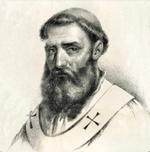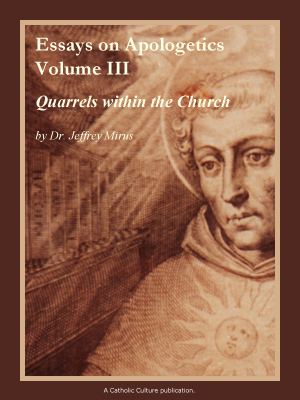The Church | What You Need to Know
The Church is an inexhaustible mystery: the people of God, the bride of Christ, even His Mystical Body. Authority in the Church is exercised in Christ’s name by the successors of Peter and the bishops in union with him until Christ returns. The Church is constituted by all the means God has provided for salvation. She is the New Jerusalem, and through the Eucharist she gives us a foretaste of the Kingdom of God.
Impossible as it is to fully plumb this mystery, we must start somewhere. Fr. John Hardon gives us a good working definition of the Church in his Catholic dictionary.Next it is fitting to understand why Christ’s Church is called the “Catholic Church”, with a brief history of what this means and how it came about.In the end, however, there is no escape from doing some reading in-depth. The ideal document is Vatican II’s magisterial Dogmatic Constitution on the Church. The Latin title, Lumen Gentium, reveals yet another aspect of the Church’s mystery, for she is the “light of nations”.Essential Perspective
- Definition of the Church
- How Did the Catholic Church Get Her Name?
- Vatican II: Dogmatic Constitution on the Church (Lumen Gentium)
Extra Reading
The Importance of Lumen Gentium cannot be overestimated. Pope John Paul II said at one of his audiences that this document is The Key to the Council. And while still a cardinal, Pope Benedict XVI recognized its importance and addressed The Ecclesiology of the Constitution on the Church as always situated within the “discourse on God”.
Some misunderstanding arose after the Council regarding the word “subsists” where Lumen Gentium stated that the Church of Christ “subsists” in the Catholic Church. This misunderstanding was clarified in 2007 by the Congregation for the Doctrine of the Faith in its brief Responses to Some Questions Regarding Aspects of the Doctrine of the Church and the accompanying Commentary.
There has also been much recent confusion over the meaning of the Church’s traditional saying extra ecclesiam nulla salus (“outside the Church there is no salvation”) in light of other teachings about the possibility of salvation for non-Catholics who sincerely attempt to know and follow the will of God. A brief essay which shows how these teachings fit together is The Church: Who’s In and Who’s Out?.
Finally, lest anyone think absolutely everything about the Church has been neatly covered in any one document, it may be useful to read the Congregation for the Doctrine of the Faith’s 1992 statement on yet another facet of this profound and wonderful mystery: Some Aspects of the Church Understood as Communion.
Note: The Church's relationship to ecumenism and the quest for Christian unity will be addressed in a later WYNTK item. In the meantime, the showcase document for that topic is Pope John Paul II's 1995 Encyclical Ut Unum Sint (That They May Be One).






